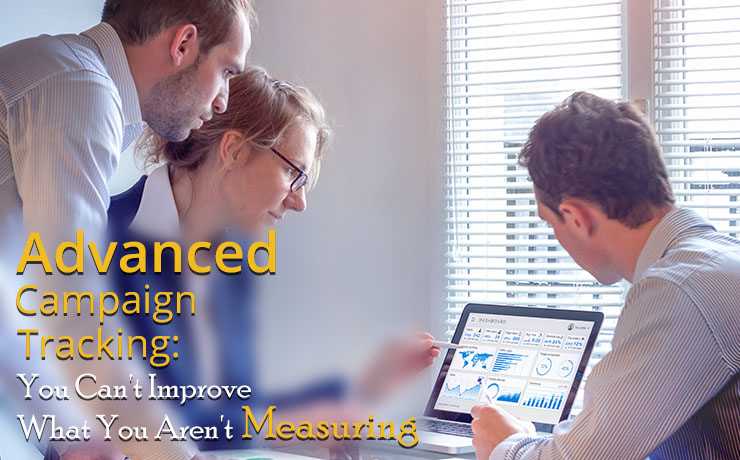Transitioning from Universal Analytics to GA4: Embracing the Future of Web Analytics

Stephanie Schwailik
Senior PPC Analyst

In the rapidly evolving digital landscape, staying ahead of the curve is crucial for businesses striving for success. Web analytics provides valuable insights into user behavior, marketing effectiveness, and website performance, and as technology advances, so too must the tools we use. Universal Analytics (UA) has long been a reliable solution, but with the need for more comprehensive and adaptable analytics, it is time to embrace the transition to Google Analytics 4 (GA4). Let’s explore the shift from Universal Analytics to GA4, and discuss the significance of this transition.
Understanding the Need for Change
Universal Analytics has served as a dependable analytics tool for countless businesses, enabling them to track website metrics, generate reports, and gain insights into user engagement. However, the rapid growth of mobile usage, emerging technologies like voice search and IoT devices, and the increasing need for cross-platform tracking, began to highlight the limitations of Universal Analytics. Recognizing this, Google introduced Google Analytics 4 (GA4) to provide a more robust and adaptable analytics solution.
Introducing Google Analytics 4 (GA4)
Introduced in October 2020, Google Analytics 4 (formerly known as “App + Web”) offers a comprehensive and future-proof analytics solution. Designed to address the challenges posed by the evolving digital landscape, GA4 leverages machine learning, artificial intelligence, and advanced tracking mechanisms to offer a deeper understanding of user behavior across multiple devices and platforms.
Key Features and Benefits of GA4
- Enhanced Cross-Platform Tracking: GA4 allows businesses to track user interactions across websites, mobile apps, and other digital platforms, providing a unified view of user engagement and conversion paths.
- Advanced Event Tracking: GA4 focuses on event-based tracking, enabling businesses to track specific user actions, such as button clicks, video views, and form submissions, with greater flexibility and accuracy.
- Customer-Centric Measurement: GA4 shifts the focus from sessions and pageviews to the individual user level. It introduces the concept of “events” and “user properties,” enabling businesses to analyze user-centric metrics and gain insights into customer behavior at a more granular level.
- Machine Learning-Powered Insights: GA4 incorporates machine learning algorithms to deliver more meaningful insights. It automatically surfaces trends, highlights important metrics, and provides predictive analysis to help businesses make data-driven decisions.
- Privacy-Centric Approach: GA4 addresses growing concerns around user privacy by offering more options for data control and privacy compliance. It aligns with privacy regulations and allows businesses to configure data collection based on their specific requirements.
The Transition Process
As Universal Analytics approaches its sunset, transitioning to GA4 becomes crucial. While the process may seem daunting, Google provides resources and tools to simplify the migration. Here are some key steps to consider:
- Familiarize Yourself with GA4: Take the time to explore and understand the features and capabilities of GA4. Familiarize yourself with the new interface, data structure, and terminology to ensure a smooth transition.
- Create a GA4 Property: Set up a new GA4 property alongside your existing Universal Analytics property. This will allow you to collect data in both systems during the transition period.
- Define Your Measurement Strategy: Assess your existing measurement goals and KPIs and map them to GA4’s event-based model. Redefine your tracking requirements and ensure that your data collection aligns with your business objectives.
- Update Your Tracking Code: Implement the GA4 tracking code on your website and app. This involves updating your tracking snippets, event triggers, and any custom tracking configurations.
- Set Up Data Import: Consider importing historical data from your Universal Analytics property to GA4.
The transition from Universal Analytics to Google Analytics 4 marks a significant milestone in the world of web analytics. As Universal Analytics sunsets, embracing GA4 becomes essential for businesses to stay competitive in the ever-evolving digital landscape. With its enhanced cross-platform tracking, advanced event tracking capabilities, customer-centric measurement approach, machine learning-powered insights, and privacy-centric features, GA4 offers a powerful analytics solution for businesses of all sizes. By familiarizing yourself with GA4, successfully migrating your tracking code and data, you can unlock its full potential. This will provide deeper insights into user behavior, drive informed decision-making, and propel your business into the future. Don’t hesitate to embrace this transition, and start your journey towards a more comprehensive and impactful web analytics experience with GA4.
 Free
Consultation
Free
Consultation Free
Google Ads Audit
Free
Google Ads Audit







